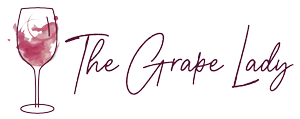
Dear Wine Enthusiasts,
Last Thursday, I had the pleasure of attending the esteemed Academy du Rhone, a wine boot camp (minus the push-ups!) for sommeliers, organized by Inter-Rhone, an association of Rhone Valley wine producers. It was a day filled with delightful sips and fascinating insights as we explored sixteen wines from the 31 appellations, starting bright and early at 10 am. Throughout the day, I eagerly took over twenty-five pages of notes, soaking up all the knowledge the seminar had to offer. Armed with my newfound wisdom, I geared up for the afternoon exam, ready to put my learning to the test and emerged triumphantly as a Certified Rhone Specialist!
Now, you don’t have to enroll in a class, no test required! Allow me to share some of the fantastic insights I gained and introduce you to some truly exceptional wines from the Rhone Valley.
Firstly, did you know that the Rhone Valley is the second most exported wine region of France, even though it occupies just 9% of French vineyards? With an impressive 418 communes, 31 legally defined appellations, and 17 crus, there is an array of wines here to suit every palate. (Crus are appellations with the most prestige.)
No Seriously – Hidden Treasures Abound!
Despite being the number one market for Chateauneuf-du-Pape, the Rhone Valley remains largely underappreciated in the United States. However, there’s good news for wine enthusiasts looking to explore new and approachable options. The Rhone Valley offers 30 other regions crafting exceptional wines at easily attainable prices. While Chateauneuf-du-Pape deserves all the love, this lesser-explored territory presents a treasure trove of affordable and delightful wines just waiting to be discovered.
Fun Fact: 76% of the wines made in the Rhone Valley are red. Think of the grape varietals like the perfect seasoning, making your wine experience truly savory, like MSG. But the traditional way to shorten the ‘Rhone Ranger’ grapes is GSM.

Grenache – The Versatile Companion
Known as Garnacha in Spain, Grenache shines in the southern Rhone. Low in tannins and light in color, this grape thrives when blended with others to elevate the blend’s character. Prepare to savor delightful flavors of spiced red berries, herbs, baking spices, musk, dried red flowers, and sometimes even mushrooms.
Syrah – The Northern Star
In the Northern Rhone, Syrah takes the spotlight, often blended with small amounts of white grapes. Down south, it partners with Grenache to provide color and tannins to blends. Its captivating bouquet includes black fruit, violets, roses, herbs, olives, smoke, peppercorns, and sometimes even bacon. A fun tip: Sniff black pepper before your wine to recognize that smell better – it’s a trick that works like magic! I call it ‘comparative sniffing’ and it changed my world.
Mourvedre – The Bold and Intense One
Also known as Monastrell in other countries, Mourvedre is a dark-skinned variety that loves the heat. It adds depth with its rich color, alcohol, and tannins to blends. Get ready to savor the aromas of ripe blackberries with this enticing grape.
Syrah and Viognier – An Unexpected Union
Ever wondered why Syrah is often blended with Viognier, a white grape? Well, back in the day, the wine’s color was considered of utmost importance. Syrah faced a challenge as its color fades within about five years. An ingenious winemaker (whose name remains lost in history) discovered that a touch of Viognier would “fix” the color issue, resulting in the deeply colored Syrahs we adore today.
It’s Not Just Red Wine…
While only 11% of Rhone Valley wines are white, they are an absolute delight! Meet the primary grapes that shine in the whites:

Here’s an easy way to remember them – Mr. V likes the ladies, as the white grapes have a feminine touch. These wines are a wonderful alternative to Chardonnay, boasting notes of apple, pears, honey, and white flowers.
And wait, there’s more!
Tavel, the only wine region in France entirely dedicated to rosé, comes from the Rhone Valley. Move over Provence, because Tavel has been making wine longer and has nearly twenty legally authorized grapes, making it an adventure to explore. Choose from light, Provence-style rosés, or opt for the darker, more savory offerings. Personally, I lean towards the latter.
Now that your curiosity is piqued, and your thirst is stirred, let me share some hidden gems I discovered during my journey. Embrace the wines of the Rhone Valley and dazzle your friends with your newfound knowledge.
With a Certified Rhone Specialist’s Cheers,

